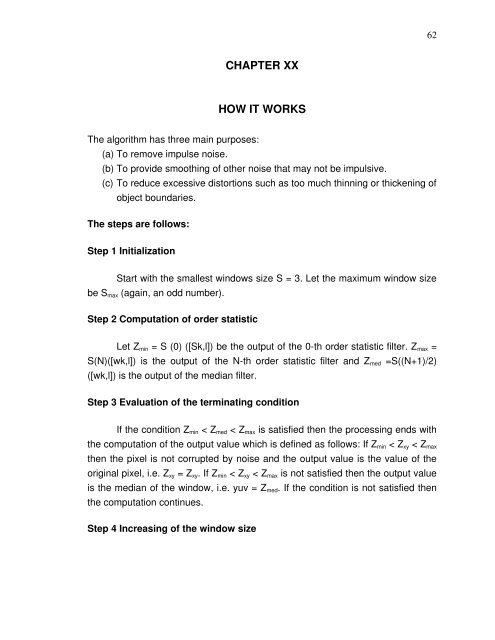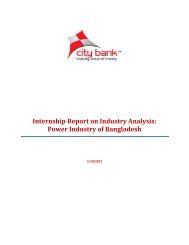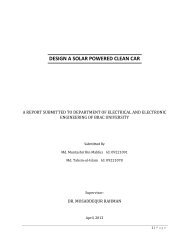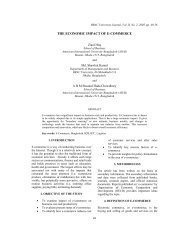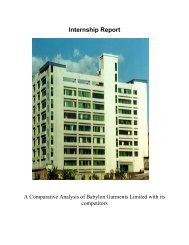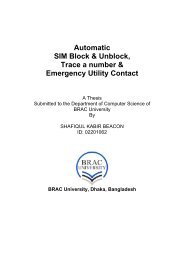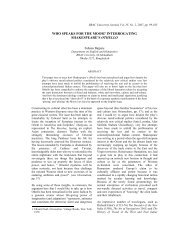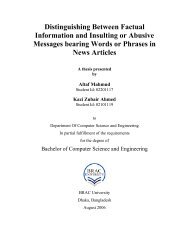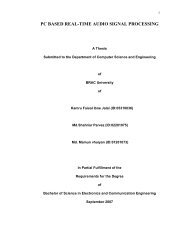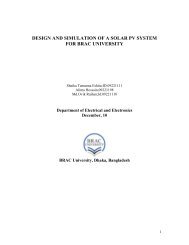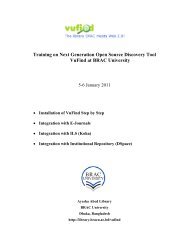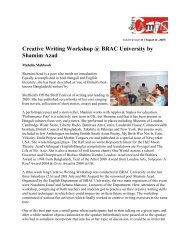LITERATURE SURVEY OF AUTOMATIC FACE RECOGNITION ...
LITERATURE SURVEY OF AUTOMATIC FACE RECOGNITION ...
LITERATURE SURVEY OF AUTOMATIC FACE RECOGNITION ...
You also want an ePaper? Increase the reach of your titles
YUMPU automatically turns print PDFs into web optimized ePapers that Google loves.
The algorithm has three main purposes:<br />
(a) To remove impulse noise.<br />
CHAPTER XX<br />
HOW IT WORKS<br />
(b) To provide smoothing of other noise that may not be impulsive.<br />
(c) To reduce excessive distortions such as too much thinning or thickening of<br />
object boundaries.<br />
The steps are follows:<br />
Step 1 Initialization<br />
Start with the smallest windows size S = 3. Let the maximum window size<br />
be Smax (again, an odd number).<br />
Step 2 Computation of order statistic<br />
Let Zmin = S (0) ([Sk,l]) be the output of the 0th order statistic filter. Zmax =<br />
S(N)([wk,l]) is the output of the Nth order statistic filter and Zmed =S((N+1)/2)<br />
([wk,l]) is the output of the median filter.<br />
Step 3 Evaluation of the terminating condition<br />
If the condition Zmin < Zmed < Zmax is satisfied then the processing ends with<br />
the computation of the output value which is defined as follows: If Zmin < Zxy < Zmax<br />
then the pixel is not corrupted by noise and the output value is the value of the<br />
original pixel, i.e. Zxy = Zxy. If Zmin < Zxy < Zmax is not satisfied then the output value<br />
is the median of the window, i.e. yuv = Zmed. If the condition is not satisfied then<br />
the computation continues.<br />
Step 4 Increasing of the window size<br />
62


